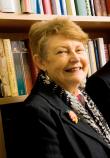'A comprehensive account of the survival of Aborigines in Tasmania and an examination of their interaction with white settlers.'
'The extinction of the Tasmanian Aborigines has long been viewed as one of the great tragedies resulting from the British occupation of Tasmania. This book demonstrates that the Aborigines in Tasmania, although dispossessed, did not die out then or at any other period in Tasmania's history. Some eight thousand descendants remain today.'
'In examining the myth created by nineteenth-century historians and scientists that Aborigines could not survive invasion, Lyndall Ryan investigages the nature of that invasion, Aboriginal resistance, and white Tasmanian policies towards the Aborigines after dispossession.'
'The Aboriginal Tasmanians then follows the emergence of a new Aboriginal community outside the boundaries of white society yet denied Aboriginal identity. In this new edition, Lyndall Ryan explores the fortunes of the present day community in their quest for landrights and social justice.'
'Tasmania was the cradle of race relations in Australia in the nineteenth century. It retains this position on the 1990s. In telling the story of the Aboriginal Tasmanians' struggles for a place in their own ountry, Lyndall Ryan provides special insights into the past and present of Aboriginal people nation-wide.' (Source: Publisher's website)


